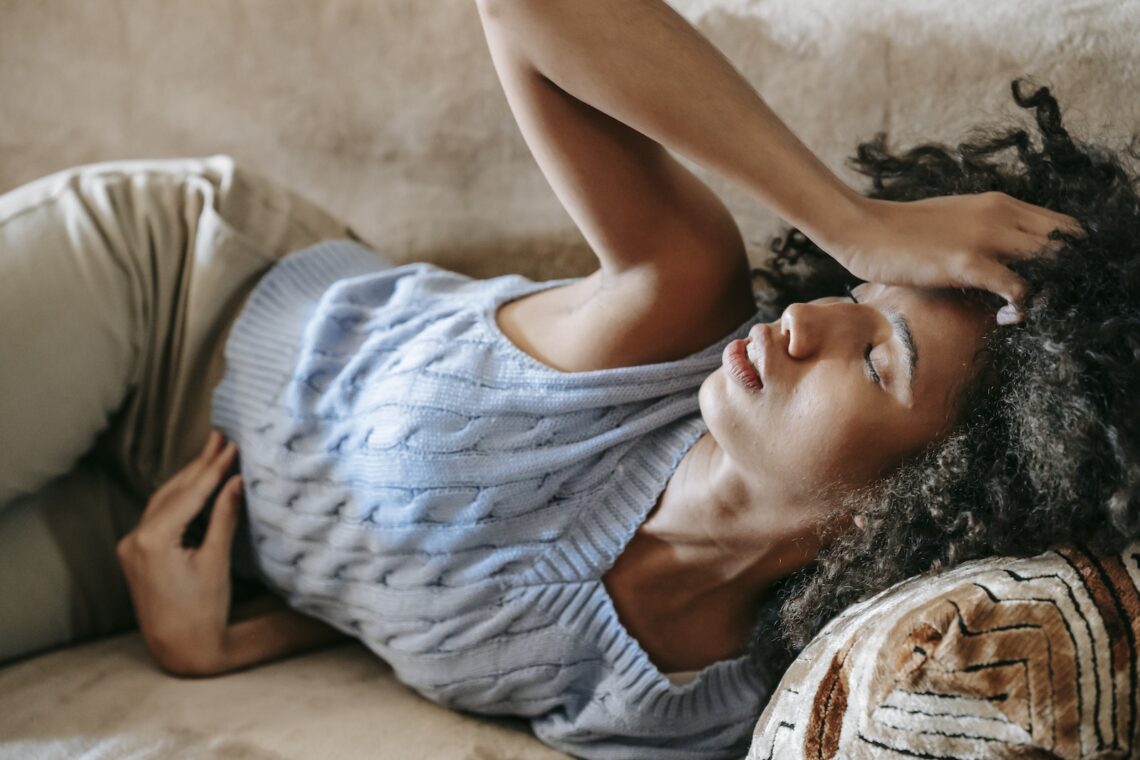If your breasts are sore after your period, it’s important to know that there are two types of breast pain. The first is cyclical pain, which happens right before your period starts, and the second is non-cyclical pain that isn’t associated with your period.
Cyclic pain is caused by hormonal changes that happen after you ovulate.
Hormonal Changes
If you find your boobs feel sore in the days leading up to and during your period, you’ve probably got what’s called cyclical breast pain or mastalgia. It happens in 70% of women and is a normal part of the menstrual cycle.
It occurs because of fluctuations in your estrogen and progesterone levels. When estrogen is high, milk ducts swell up and cause your nipples to feel tender and full. Progesterone usually takes over in the second half of your menstrual cycle and reduces your nipple size, but it can still cause your boobs to feel sore.
Normally, cyclical breast pain goes away once your period is over. But for some women, it lingers, especially those who are premenopausal or are taking hormone replacement therapy.
If you have cyclical breast pain, there are some at-home treatments that might help, like avoiding salty foods (which can increase fluid retention) and wearing a looser bra to lessen the pressure on your nipples. Also, a hot water bottle can help with the swelling and if you’re working out, a supportive sports bra can decrease your discomfort. Pain that is not cyclical and lasts more than a week or hurts in one specific spot could be a sign of something more serious like an infection or injury to the chest wall, ribs or muscles that lie underneath your breasts.
Fungal Infection
Fungi are tiny organisms that are normally present on and inside the body, but they can cause infections under certain conditions. Fungi can also be found in the environment (like mold or mildew) and on surfaces that are rich in fungi (such as damp public spaces like showers, locker rooms and gyms).
Fungal infections may affect only one area of the body (localized) or multiple areas (systemic). Localized fungal infections typically occur in people with normal or weakened immune systems. They may affect the skin and nails, lungs, mouth and throat, vagina or genitals, and can appear in the form of a blister-like rash, white patches, itching, flaking or redness.
A yeast infection is the most common type of a fungal infection. It’s caused by the fungus Candida albicans, which normally lives in small amounts on the skin and in the digestive tract without causing symptoms. However, it can overgrow in warm and moist environments and is often associated with a swollen, painful vulva or nipples. It can also develop in the throat and mouth, resulting in a condition called thrush.
Other types of fungal infections include a jock itch, athlete’s foot and ringworm. Fungi that live in the soil, including Histoplasma, Blastomyces and Coccidioides, may cause a fungal infection called Valley fever, which is found in the southwest United States and parts of Central and South America.
Medications
If your boobs feel sore in the days before your period, it’s likely because of hormone changes. The pain usually starts a few days before the start of your period and will stop once your menstrual flow begins. This is known as cyclical breast pain, and it’s completely normal.
However, if your pain doesn’t go away once your period is over, it may be a sign of an underlying issue. This can be caused by medications, stress, or other health conditions. If this is the case, you’ll want to see a doctor for further evaluation.
In addition to taking non-steroidal anti-inflammatory pain relievers (like ibuprofen or naproxen), you can also try wearing a supportive bra and avoiding fatty foods that can cause bloating. It’s also a good idea to get plenty of exercise, as this can help boost your body’s natural endorphins that act as natural painkillers.
In some cases, your sore nipples could be an early sign of pregnancy. This is because progesterone levels in the body rise and can make your nipples feel tender and lumpy. This can last for a few months before the pain level off or stop altogether, Dr. Jamshidi explains. It’s also common for women to experience sore nipples during pregnancy because of the increased production of milk, and it can be more progressive, Dr. Wider adds.
Breast Cysts
If you’ve been feeling lumpy and tender in your boobs before your period, it could be a sign of fibrocystic breast changes. These cause fluid-filled sacs (similar to a water balloon) to develop in the milk ducts, Dr. Shirazian says. Cysts often feel painful and swollen before periods, since hormone levels are fluctuating and may be higher than usual.
These sacs can be soft or hard. They can also be a combination of both. They’re usually shaped like a ball with distinct edges and can be as big as a golf ball. They may feel softer when they’re closer to the surface of the skin, but harder when they’re deeper in the breast tissue. Cysts are a common symptom in women with fibrocystic breasts, and they can be a lot more uncomfortable than just regular pain.
Other causes of breast pain, not related to the menstrual cycle, include pregnancy, a poorly fitting bra, a medical condition, or trauma to the nipples. Costochondritis and back, shoulder, or neck sprains can also feel similar to breast pain. Finally, some medications can also lead to sore boobs, including oral contraceptives, hormone replacement therapy, antibiotics, and antidepressants. If your breast symptoms persist, see a doctor for evaluation and treatment options.

